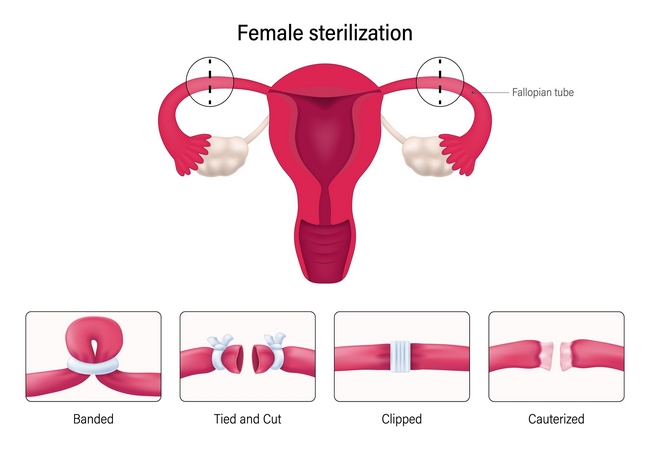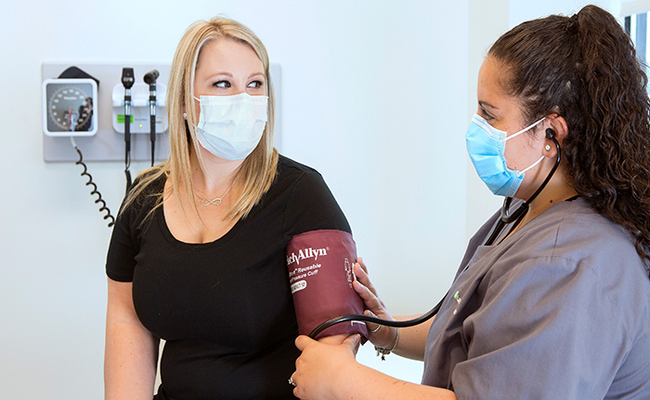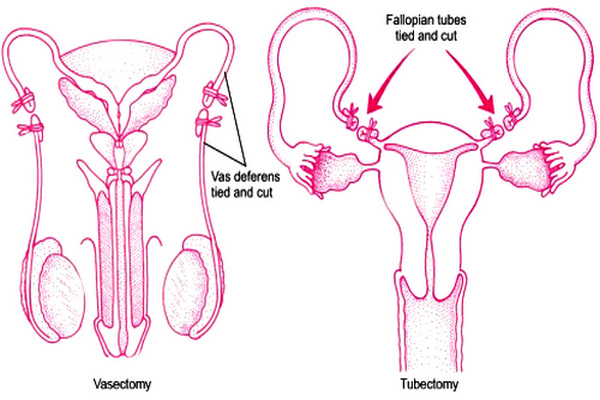Tubal Ligation or Tubectomy Procedure and Indication
What is Tubectomy or Tubal Ligation?
Occlusion by segment of both the fallopian tubes is called tubectomy. It is the permanent sterilization procedures for the female. Occlusion of the fallopian tubes in some form is the underlying principle to achieve female sterilization.

Preparation of a Patient for Tubectomy or Tubal Ligation:
A. Counseling:
- The patient and her husband should be informed beforehand that the method is permanent and usually is not reversible.
- The couple should be informed that it would not interfere with the conjugal life or normal household work.
- The risk of tubectomy must also be explained to the patient.
- Informed consent should be taken from the acceptors.
B. Pre-requisite:
- Detailed history regarding menstrual cycle, LMP, no. of living children, age of the last child should be taken and also history of PID, pełvic surgery, any medical diseases should be taken.
- G/E is to be done to note the pulse, BP, heart & lung condition, absence of anaemia & jaundice. Pelvic exam is to be done to see the size, shape, position and mobility of the uterus & fornices for any pathology.
- Hb% should be estimated and must be more than 10 gm%.
- Urine analysis is to be done.
- She should be in empty stomach at least for 6 hours prior to tubectomy.
C. Pre-operative preparation:
- Half an hour before tubectomy 10 mg diazepam is given.
- Then she should void urine and is taken to the operation table.
- IV is started.
- Pethidine 50 mg, Inj. Phenergan 25 mg and Inį. Atropine 0.6 mg is given IV.
- The abdomen is cleaned with providone iodine and then drapping is done.
- 1% lignocane is used.
Procedure of Tubectomy or Tubal Ligation:
It includes the following-
- 1% lignocaine is used as a local anaesthetic, about 20 ml is taken is a syringe. 3-5 ml is injected under the skin at the incision site, Skin incision is given 3 minutes after the injection.
- In interval tubectomy, a transverse incision of about.2.5 to 3 cm is made 2.5 -3 cm above the symphysis pubis. The skin and subcutaneous tissue are then incised with a scalpel.
- Another 3-5 ml of 1% lignocaine is then injected into the reçtus sheath. The rectus sheath is then retracted laterally.
- The rectus muscles are then retracted laterally.
- 3-5 ml of lignocaine is now injected to the peritoneum that is then picked up with a pair of artery forceps, great care should be taken to avoid injury to the intestine and the bladder. The peritoneum is now incised longitudinally.
- Small Morris retractor can be used to retract the lower margin of the wound. Five ml of 1% lignocaine is then poured over the uterus and the tubes.
- Two fingers are introduced into the pelvic cavity and the fallopian tube is forked out through the wound seeing the fimbria identifies the tube. It is hold with Babcock’s at the junction of the medial 1/3rd and the lateral 2/3rd and a loop is made. The base of the loop is tied by chromic catgut followed by the excision of the knuckle of the tube and then the tube is returned to the cavity after ensuring haemostasis. Same procedure is repeated on the opposite side.
Indications of Tubectomy or Tubal Ligation:
It includes-
- To limit the size of the family.
- For the purpose of population control.
- In certain medical diseases where further pregnancy will be hazardous for the maternal health.
More questions related to this article:
- How will you prepare a pt. for tubal ligation?
- Write down the steps of permanent methods contraception in female.
- Give the steps of tubectomy.
- Write down the steps of minilaparotomy
- Write short note on permanent method of female contraception (minilap).
- What are the indications of female sterilization?
- What are the indications of permanent female sterilization?
- Write down the indication of tubal ligation.











